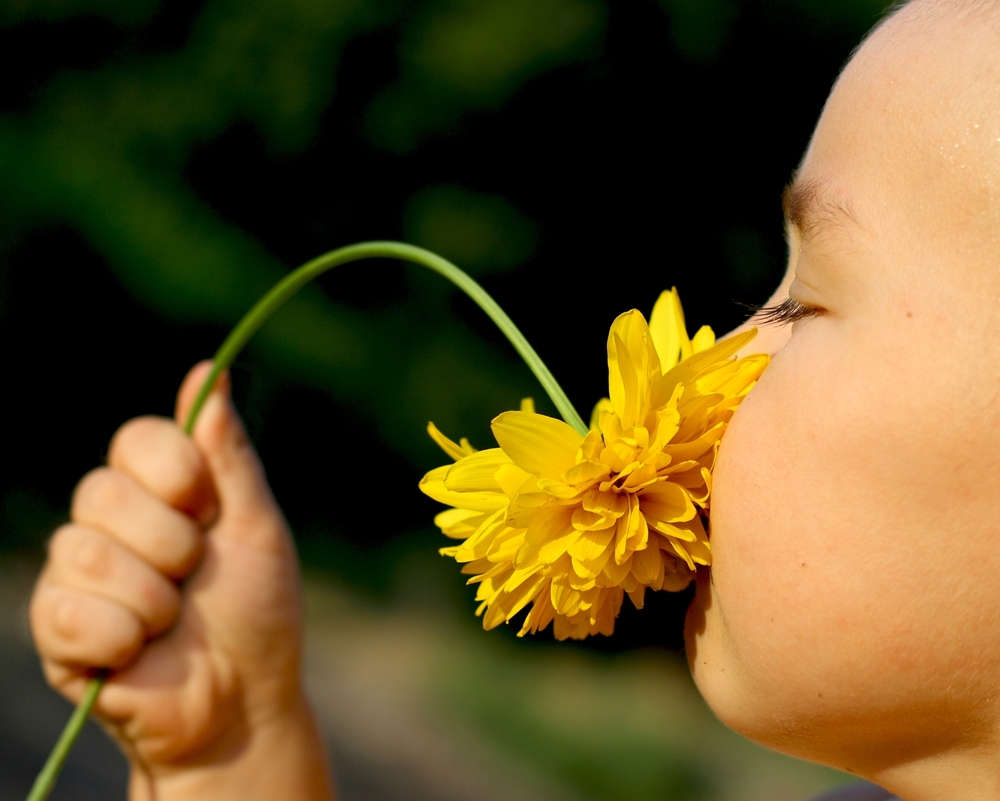What Is Causing My Child's Allergies: A Hygienic Hypothesis
March 25, 2022
Common childhood illnesses, such as allergies and asthma, have become increasingly frequent in the last decades, particularly in Western countries. [1] On the one hand, we used to believe that the rise in allergy disorders was related to the fact that we were not exposed to as many early infections as previous generations. On the other hand, scientific evidence demonstrates that this is not the case. It appears that spending time in nature and being exposed to a range of bacteria, fungi, and other microorganisms (that are not disease-causing) can help to reduce the severity of asthma and allergy symptoms in people who suffer from them.
It is the purpose of this article to provide a concise summary of some of the most significant points related to the so-called classic hygienic hypothesis in the scientific community. Furthermore, as we will explain further below, we believe it is worthwhile to consider a contemporary point of view on this theory.
In 1989 David Strachan postulated that the growth in some allergy disorders could be linked to low infection rates in childhood. He examined the allergy patterns of nearly 17,000 children in the United Kingdom, observing that younger siblings in large families were less likely to suffer from fever than older siblings or children from small families. These younger siblings, he argued, were more likely than their older siblings to be exposed to childhood illnesses at a younger age because more insects circulated in these larger families and because younger children were less likely to wash their hands and maintain proper hygiene than their older siblings. [2] Strachan hypothesized that greater exposure to childhood diseases helped to train their immune systems not to overreact to seemingly harmless items like pollen and dust mites.

In other words, Strachan's idea that a lack of contact with common human illnesses (with which humanity has coexisted for hundreds and thousands of years) during childhood leads to the development of weakened immunity. Immune cells, in particular, are capable of switching to antigens that were previously considered harmless. Until such time as a precise technique for evaluating the amount of hygiene is developed, the hygiene hypothesis will remain just that: a theory. However, this argument is supported by a large body of circumstantial evidence.
According to Okada et al. [3], allergy and other immunological illnesses are significantly more common in developed countries with a high degree of hygienic culture than in developing ones. These diseases are also more prevalent among immigrants from underdeveloped nations than their native-born counterparts in their home countries.
Some researches ([4], for example) have demonstrated a link between intestinal microflora diversity and immune disease development: the less diverse the microbiota, the more likely it is that an individual may acquire allergy and other immunological illnesses. A high-fat diet and the uncontrolled use of antibiotics have been proven to increase the probability of developing asthma. The same pattern was found in children who are frequently exposed to viral infections [5].
Is this, however, a prohibition on youngsters washing their hands after taking public transportation or eating veggies straight from the market counter? In no way, shape, or form! There is one significant aspect on which Strachan was incorrect: exposing children to a specific environment does not have a connection with the chances of observing the appearance of allergies. This has been demonstrated in numerous research conducted in the United Kingdom [6], Finland [7], and Denmark [8].
However, the hygiene hypothesis cannot be totally dismissed. The fact is that we must encounter a large number of bacteria, fungi, and other microorganisms on a regular basis for our immune system to operate correctly. But the environment, as well as the number of germs or bacteria present, should not be a factor in our becoming sick. The findings of a study conducted in 2010 on the impact of not-urban life on childhood allergies [9] revealed that children who grew up on a farm or in close proximity to a forest are exposed to more biodiverse settings, which reduces the likelihood of developing asthma and other types of allergies. As a result of exposure to a diverse range of organisms with fewer human illnesses, some researchers believe that the immune system has been "educated" to not overreact to harmless proteins found in pollen, peanuts, and other allergy triggers.

Consequently, we may want to expose children to an environment that is more comparable to the one in which humans and our immune systems first evolved. Here are some ideas in our parenting blog on how to keep your kid engaged in spring both outside and inside.
Useful Tips on How to Help a Child's Immune System
It is unquestionably vital that youngsters have access to green spaces. Being outside, having a garden, or living close to green places [10] can expose children to a greater range of microorganisms and provide them with more protection against allergy illnesses.
As a result of their wider variety of bacteria, fungus, and other microscopic organisms living in their body, breastfed newborns have a lower risk of developing allergy illnesses in childhood [11] than formula-fed children.
A diversified diet that includes fresh and fermented foods [12] can aid in the development of a healthy gut microbiome as well as the reduction of allergy disorders. In addition, antibiotics should only be used when absolutely required [13] because they destroy both dangerous bacteria and beneficial microorganisms.
Moreover, some experts believe that heightened demand for personal hygiene (which includes regular bathing with soap, scrubs, and other techniques of removing oil from the skin) may be a contributing cause of dermatitis and other skin disorders. Microorganisms removed from the skin's surface can have an impact on the skin's natural oil balance, which can cause skin irritation and even diseases if the balance is thrown off. [14]
It is important to remember to wash your hands frequently, especially in metropolitan places and airports. Still, you should not be afraid to get your hands dirty in a biodiverse environment. In addition, keep in mind that having a cat or dog in the house can be pretty good for your child's immune system! [15] You can also find play-and-learn educational materials dedicated to the hygiene and healthy habits here at Kids Academy!
References:
- Asher, M. I., Montefort, S., Björkstén, B., Lai, C. K., Strachan, D. P., Weiland, S. K., ... & ISAAC Phase Three Study Group. (2006). Worldwide time trends in the prevalence of symptoms of asthma, allergic rhinoconjunctivitis, and eczema in childhood: ISAAC Phases One and Three repeat multicountry cross-sectional surveys. The Lancet, 368(9537), 733-743.
- Strachan, D. P. (2000). Family size, infection and atopy: the first decade of the hygiene hypothesis'. Thorax, 55(Suppl 1), S2.
- Okada, H., Kuhn, C., Feillet, H., & Bach, J. F. (2010). The ‘hygiene hypothesis’ for autoimmune and allergic diseases: an update. Clinical & Experimental Immunology, 160(1), 1-9.
- van Tilburg Bernardes, E., & Arrieta, M. C. (2017). Hygiene hypothesis in asthma development: is hygiene to blame?. Archives of medical research, 48(8), 717-726.
- Kusel, M. M., de Klerk, N. H., Kebadze, T., Vohma, V., Holt, P. G., Johnston, S. L., & Sly, P. D. (2007). Early-life respiratory viral infections, atopic sensitization, and risk of subsequent development of persistent asthma. Journal of Allergy and Clinical Immunology, 119(5), 1105-1110.
- Bremner, S. A., Carey, I. M., DeWilde, S., Richards, N., Maier, W. C., Hilton, S. R., ... & Cook, D. G. (2008). Infections presenting for clinical care in early life and later risk of hay fever in two UK birth cohorts. Allergy, 63(3), 274-283.
- Dunder, T., Tapiainen, T., Pokka, T., & Uhari, M. (2007). Infections in child day care centers and later development of asthma, allergic rhinitis, and atopic dermatitis: prospective follow-up survey 12 years after controlled randomized hygiene intervention. Archives of pediatrics & adolescent medicine, 161(10), 972-977.
- Benn, C. S., Melbye, M., Wohlfahrt, J., Björkstén, B., & Aaby, P. (2004). Cohort study of sibling effect, infectious diseases, and risk of atopic dermatitis during first 18 months of life. Bmj, 328(7450), 1223.
- Von Mutius, E., & Vercelli, D. (2010). Farm living: effects on childhood asthma and allergy. Nature Reviews Immunology, 10(12), 861-868.
- Ruokolainen, L., Von Hertzen, L., Fyhrquist, N., Laatikainen, T., Lehtomäki, J., Auvinen, P., ... & Hanski, I. (2015). Green areas around homes reduce atopic sensitization in children. Allergy, 70(2), 195-202.
- Bisgaard, H., Li, N., Bonnelykke, K., Chawes, B. L. K., Skov, T., Paludan-Müller, G., ... & Krogfelt, K. A. (2011). Reduced diversity of the intestinal microbiota during infancy is associated with increased risk of allergic disease at school age. Journal of Allergy and Clinical Immunology, 128(3), 646-652.
- Marco, M. L., Heeney, D., Binda, S., Cifelli, C. J., Cotter, P. D., Foligné, B., ... & Hutkins, R. (2017). Health benefits of fermented foods: microbiota and beyond. Current opinion in biotechnology, 44, 94-102.
- Flohr, C., Pascoe, D., & Williams, H. C. (2005). Atopic dermatitis and the ‘hygiene hypothesis’: too clean to be true?. British journal of dermatology, 152(2), 202-216.
- Skotnicki, S., & Shulgan, C. (2018). Beyond Soap: The real truth about what you are doing to your skin and how to fix it for a beautiful, healthy glow. Penguin.
- Marrs, T., Logan, K., Craven, J., Radulovic, S., McLean, W. I., Lack, G., ... & Turcanu, V. (2019). Dog ownership at three months of age is associated with protection against food allergy. Allergy, 74(11), 2212-2219.




.jpg)






